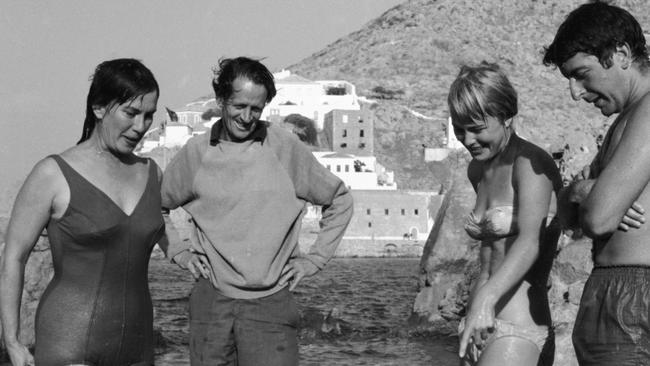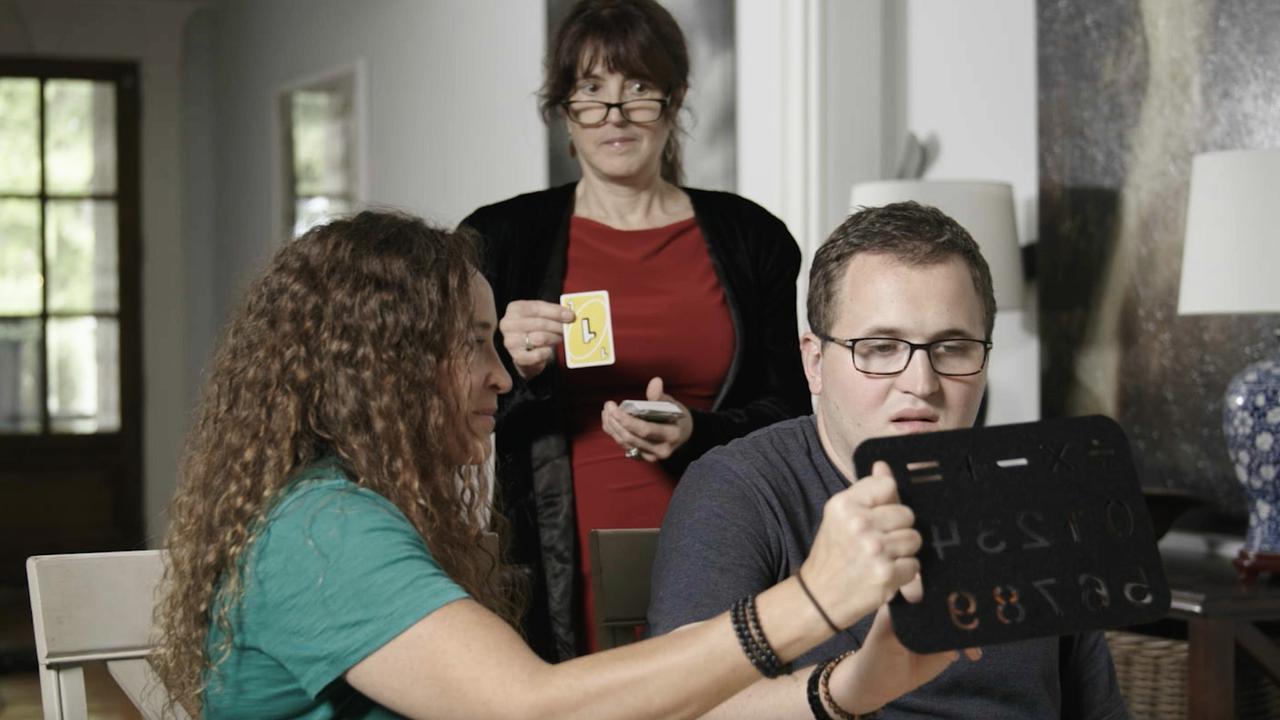Creative lives on a Greek isle
The men and women who made the Greek island of Hydra their home in the 1960s were many things, but they were never dull.

Half the Perfect World is a book as multiform in nature as the group of figures it ventures to track and trace over the course of 10 years: that rhapsody of bohemians from all corners of the world who perched in uneasy intimacy on a beautiful, rugged, rocky island in the Aegean Sea during the middle decades of the 20th-century.
It should be said that this is first and foremost an academic text. It contains all the usual scholarly scaffolding, is micrometrically exact in collecting and apportioning detail, and spares no effort in nailing down even the wispiest biographical or historical fact.
Shaped to accommodate aspects of group biography, cultural history and even sociology of creative practice, it takes a hybrid form the authors call ‘‘prosopography’’: the ‘‘story of a group of people who, by design or chance, found themselves in a shared situation, the study of which reveals insights into their individual circumstances as well as the time and place in which they lived’’.
But it is also obliged to take on some of the characteristics of its unconventional cast, and this is what lifts the work out of its earnest academic station. Because the men and women who made the Greek island of Hydra their home during those years (most significantly in terms of fame, Leonard Cohen; most important for Australian readers, George Johnston and Charmian Clift) could be garrulous and gossipy, watchful and cool, dedicated or dissolute, but never dull. Some of their glamour, eccentricity, and excess inevitably rubs off on the page.
Only some of these figures were brilliant, however. Others were merely driven. The New Zealand-born writer Redmond ‘‘Bim’’ Wallis, who lived on Hydra for some time with his wife, spent a lifetime failing to write a novel called The Unyielding Memory. It is a barely airbrushed fiction concentrated on the circle around Johnston, Clift, and Cohen that, along with his diaries and letters, rediscovered by the authors in a university library archive, provides a startling alternative view to the self-constructions of these central figures.
Likewise, photojournalist James Burke could not interest Time magazine in his 1500-odd photos of the Hydra circle back in 1960. And yet these images, along with Wallis’s writing, furnish the volume with rich and extensive background. Burke’s photos share some of the light-drenched clarity of Walter Lassally’s cinematography on the 1964 film Zorba the Greek.
Many more of these characters are seen only in passing: figures damaged, lonely, creatively or vocationally or metaphysically adrift. Clift’s memoir of the family’s first year on Hydra, Peel Me a Lotus, reserves some savage words for these droppers-in and hangers-on:
It is even difficult to think of them as individual. Boys. The posterestante, interchangeable, culture addicted, Europe-sick boys, with grey sprinkled through their crew cuts and little pads of drink-fat around their middles, who yearn for the Europe of Gertrude Stein and Scott Fitzgerald and the ‘‘lost generation’’ of a generation who were losing themselves while they were being born.
Some, like the beat poet Gregory Corso or artist Sidney Nolan, were just big names passing through. Then there were those, such as Johnston and Clift, Cohen and his famous muse Marianne Ihlen, who bought homes and stayed for years. It is the decade in which the Australian pair and their children made a life on the island that fixes the narrative’s time frame.
It also turns out that it wasn’t only the Australians whose lives were disordered. Many individuals and couples on Hydra made a habit of messiness in domestic, social and romantic relations, even as their creative work contributed to the creation of a coherent, charismatic, even mythic ideal of island life, an ideal of daily living as much as communal artistic engagement, which in turn shaped the way generations of Australians and others, elsewhere, began to live (or aspire to live) themselves.
In the case of Johnston and Clift, the general contours of their lives and work are well known, either via Nadia Wheatley and Garry Kinnane’s biographies or the couple’s own writing from the time. What is new is the degree to which journalists and other contemporary visitors tended to hymn the lifestyle the family had taken up for consumption back home.
Take Charles Sriber (an old colleague and friend of Johnston’s), writing for People magazine in 1958:
Three years ago, an Australian journalist living in London threw in a brilliant career and went with his wife and two children to live on a rocky Greek island. The family had little money and no promise of getting any. But both husband and wife had a great deal of hope. They wanted to make their living as writers and to pass their days in a community free of most of the strains and fears of modern civilization.
Sriber lingers over their sprawling stone house overlooking the picture-book harbour of Hydra’s port; the generous kitchen, complete with strings of garlic and a long dining table, where the couple entertained in way unthinkable back in straitlaced Anglo Melbourne or Sydney. It was these paradisal reports, as well as those Greeks and Italians headed for Australia to live, that brought Mediterranean living to the southern hemisphere.
But it was more than an attractive way of life for the couple. In the authors’ condensed version: “It was also within the house where the practical and the mythical became enmeshed through the couple’s creativity — where they wrote the thirteen books that allowed them to retain a tenuous grip on their island lifestyle and the fourteenth book that permitted, indeed induced, them to repatriate to Australia.”
What Paul Genoni and Tanya Dalziell tease out is the story of an idyll that darkened for its subjects, even as it took on an added lustre for those who would never experiment with such a radically different experience themselves.
It is an account of a group that sought to escape the modern world and the social strictures of their day in the hope of a more authentic existence — efforts that survive as the kind of sun-drenched hippie cliche that they may not have recognised or accepted.
Half the Perfect World is self-consciously alert to the ambivalent experience of its large and varied troupe. Its authors recognise that the beauty of the island of Hydra is shadowed by xenophobia, political reaction and gentrification. They note that the charm, talent, beauty, unconventionality of the expatriates (and storied locals) they study may obscure personal failure, loss, poverty and addiction.
Yet it is the very concentration, whether geographic or social, that the island obliged upon its denizens that makes the whole story so fascinating and potentially diverse in nature:
Islands occupy a complex space within the human imagination. They can mean many things that stand in stark opposition — islands as paradise or hell; islands as sanctuaries or prisons; islands as free and autonomous spaces, or dependencies; islands as a world complete unto themselves, or remote from the mainstream of life. The various ways in which islands are understood reflects their diversity in scale, climate, topography, proximity to other islands or a mainland as well as their individual histories and state of development.
‘‘The perception of islands,’’ they conclude, ‘‘also reflects the experience of individuals and their personal imaginative response to confined and bounded spaces.’’
It is perfectly possible to enjoy this as a sophisticated coffee-table book. It is a story studded with gems of gossip and a visual record of an intensely photogenic group of people against a timeless backdrop. The affairs, the drinking, the yachting trips, the night-time swimming picnics complete with crab sandwiches and red wine: all these have their place in the larger mosaic.
Where the book becomes something more, though, are those points where the literary representations of the time — those novels and memoirs around which certain myths have hardened — are brought hard up against the more quotidian reality of life on the island.
After absorbing the carefully amassed academic research, having boned up on the evidence for the prosecution, the achievements of figures such as Johnston and Clift seem less grand but braver, too. And all the more human for being won in the teeth of ordinary struggle.
The last word should go to Johnston, in the novelistic guise of David Meredith, reflecting on their not-quite-perfect world:
He and Kate had built something. He could see that now. They had built something that was better than either of them realised, and they had built it with the things that were to hand, here, now … with the materials available. All right, the talent of David Meredith might not be as great as he might wish it to be, nor his marriage as romantic, nor his island as idyllic … but he had brought off his own stand for the right to hold the tiller in his own hand, and, by God! This was something.
Geordie Williamson is The Australian’s chief literary critic.
Half the Perfect World: Writers, Dreamers and Drifters on Hydra, 1955-64
By Paul Genoni and Tanya Dalziell
Monash University Publishing, 425pp, $39.95



